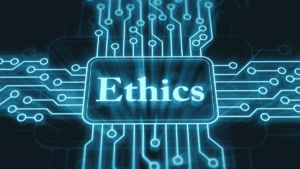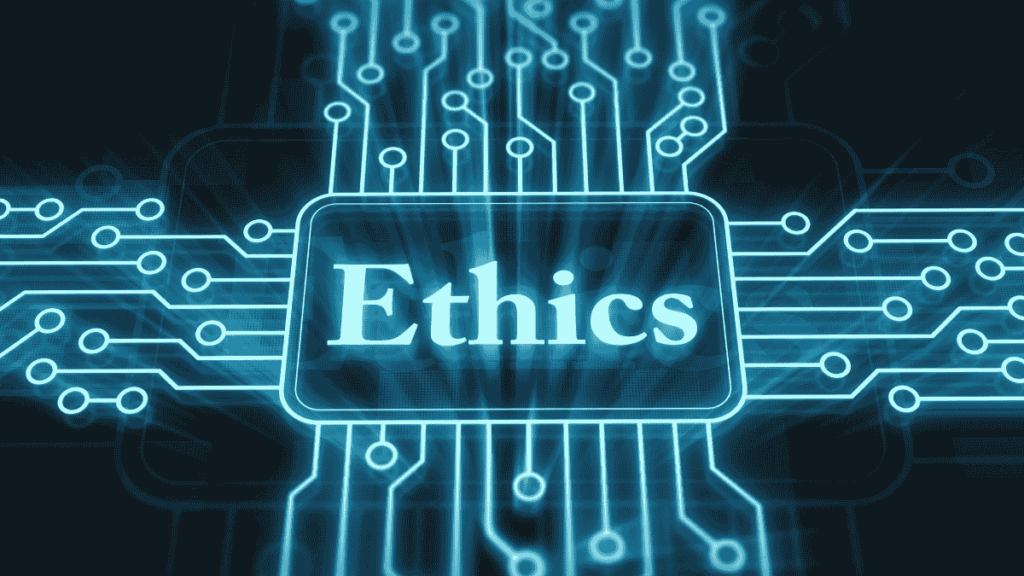Artificial intelligence is already making critical decisions in hiring, healthcare, finance, and law enforcement. But with this power comes serious ethical responsibility. As AI adoption explodes, companies must confront not just what AI can do—but what it should do.
From algorithmic bias to cybersecurity threats, the risks are real. The companies that lead with integrity and foresight will not only avoid reputational fallout but also earn long-term trust.
The Hidden Bias in the Machine
AI systems learn from data—and that data often reflects real-world inequalities. When historical bias seeps into training data, the AI inherits it. The result? Hiring tools that filter out women. Loan approval systems that penalize minority applicants. Healthcare models that overlook certain populations.
This kind of “digital discrimination” doesn’t always look intentional. But its impact is just as damaging. Worse, many AI systems operate as black boxes, with no visibility into how decisions are made.
What businesses can do:
- Audit training datasets for bias.
- Test AI systems across diverse user groups.
- Demand transparency from vendors.
- Build models that can explain their reasoning in plain language.
AI Without Validation Is a Ticking Time Bomb
Many AI tools hit the market without enough real-world testing. That’s risky. A model might perform well in a lab, but fail miserably in the wild—especially across different cultures, languages, or user behaviors.
Companies that skip thorough validation may end up deploying systems that are unstable, unfair, or even dangerous.
What businesses can do:
- Treat validation as a core ethical responsibility, not just a technical step.
- Set clear benchmarks for fairness, accuracy, and reliability.
- Involve independent third parties in testing and auditing.
When AI Becomes a Weapon
AI is also reshaping the cyber threat landscape. Malicious actors now use AI to design smarter phishing attacks, generate deepfakes, and automate hacking attempts. Even without full autonomy, these systems are learning to adapt and evade defenses faster than humans can keep up.
What businesses can do:
- Strengthen internal cybersecurity protocols with AI-aware safeguards.
- Invest in threat detection tools powered by ethical AI.
- Monitor for emerging AI threats across open-source and dark web spaces.
Ethics by Design: Building AI You Can Trust
Ethical AI doesn’t happen by accident. It starts with intent—and it requires a company-wide commitment. That means designing systems with fairness, accountability, and transparency baked in from the beginning.
Add Human Oversight
No AI system should make high-stakes decisions without a human safety net. Human-in-the-loop designs give people the power to intervene, especially when something doesn’t look right.
Educate Your Team
AI is evolving faster than most people can follow. Companies must train employees—not just developers—on how AI works, where it can fail, and how to spot ethical red flags.
Make Ethics Everyone’s Job
Responsible AI isn’t just an IT issue. It’s a leadership issue. It’s a brand issue. Ethics needs to be part of company culture. Form cross-functional teams to review deployments, raise concerns, and champion responsible practices.
AI Should Help Humanity—Not Harm It
Artificial intelligence can be a force for good. But only if it’s developed and deployed with care. Companies that ignore the ethical side of AI face more than just regulatory pressure—they risk losing public trust.
On the flip side, those that lead with transparency and accountability can turn AI into a competitive edge. Ethics isn’t a roadblock. It’s a differentiator.

